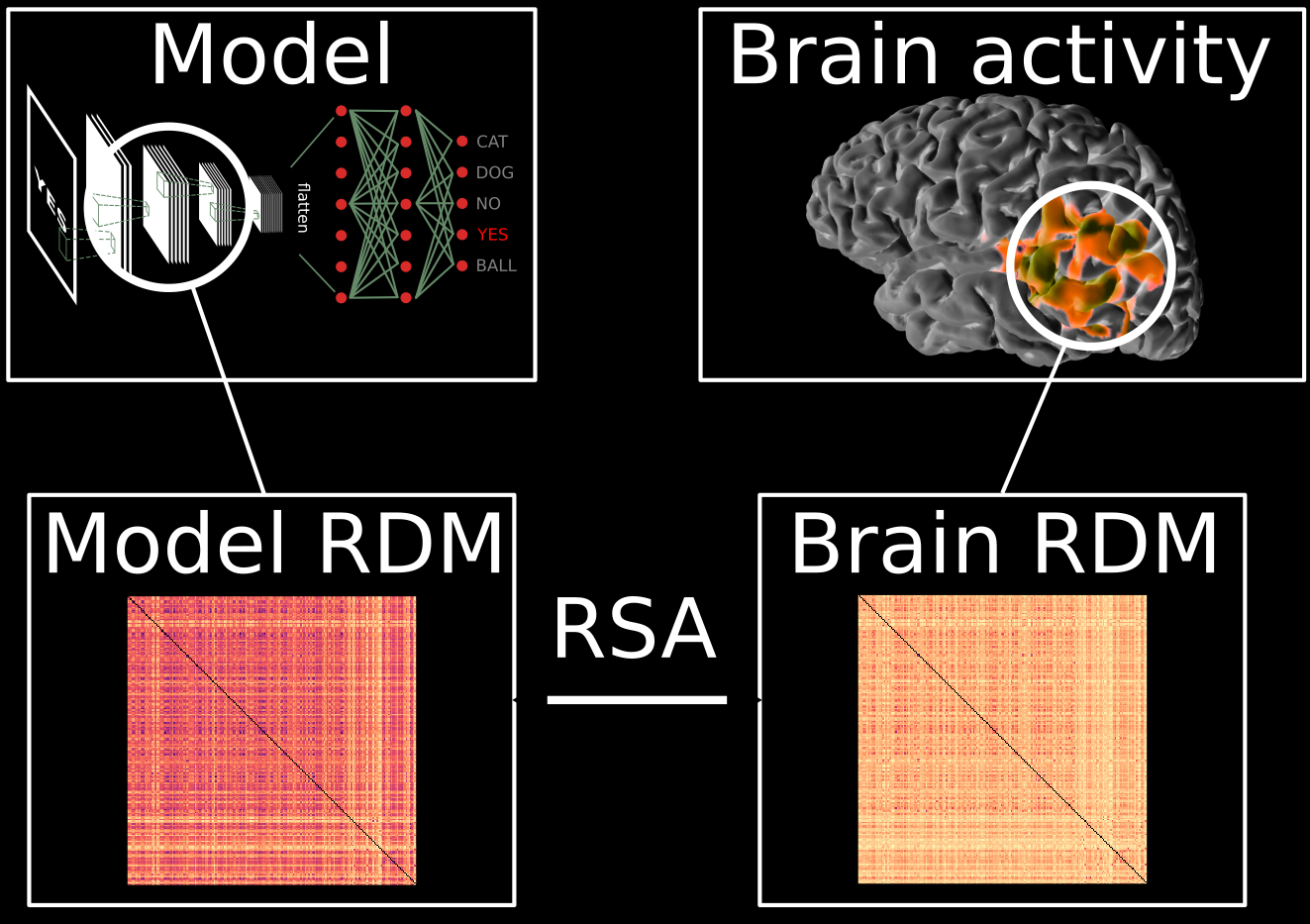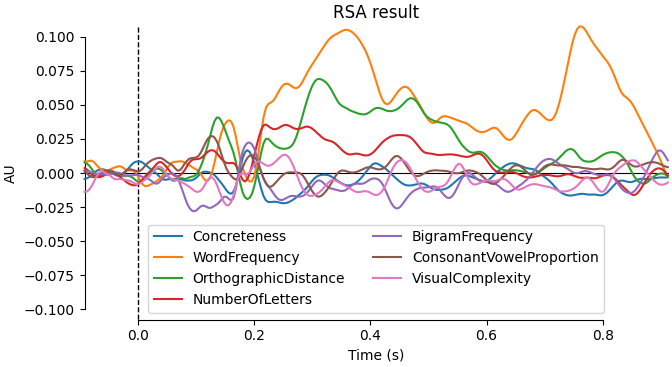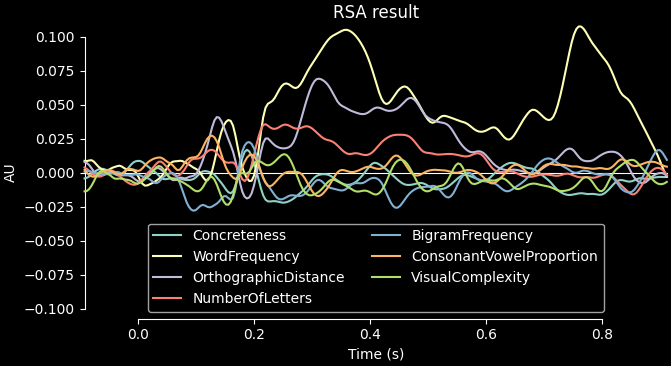MNE-RSA#
This is a Python package for performing representational similarity analysis (RSA) using MNE-Python data structures. The main use-case is to perform RSA using a “searchlight” approach through time and/or a volumetric or surface source space.
Read more on RSA in the paper that introduced the technique:
Nikolaus Kriegeskorte, Marieke Mur and Peter Bandettini (2008). Representational similarity analysis - connecting the branches of systems neuroscience. Frontiers in Systems Neuroscience, 2(4). https://doi.org/10.3389/neuro.06.004.2008


Installation#
The package can be installed either through PIP:
pip install mne-rsa
or through conda using the conda-forge channel:
conda install -c conda-forge mne-rsa
Use cases#
This is what the package can do for you:
Compute RDMs on arbitrary data
Compute RDMs in a searchlight across:
vertices/voxels and samples (source level)
sensors and samples (sensor level)
vertices/voxels only (source level)
sensors only (sensor level)
samples only (source and sensor level)
Use cross-validated distance metrics when computing RDMs
And of course: compute RSA between RDMs
Supported metrics for comparing RDMs:
Spearman correlation (the default)
Pearson correlation
Kendall’s Tau-A
Linear regression (when comparing multiple RDMs at once)
Partial correlation (when comparing multiple RDMs at once)
Example usage#
Basic example of performing RSA on the EEG “kiloword” data using a sliding window across time:
import mne
import mne_rsa
data_path = mne.datasets.kiloword.data_path(verbose=True)
epochs = mne.read_epochs(data_path / "kword_metadata-epo.fif")
# Create model RDMs based on each stimulus property
columns = epochs.metadata.columns[1:] # Skip the first column: WORD
model_rdms = [mne_rsa.compute_rdm(epochs.metadata[col], metric="euclidean") for col in columns]
# Perform RSA in a sliding window across time
rsa_results = mne_rsa.rsa_epochs(epochs, model_rdms, temporal_radius=0.01)
# Plot the result
mne.viz.plot_compare_evokeds({column: result for column, result in zip(columns, rsa_results)},
picks="rsa", legend="lower center", title="RSA result")


Documentation#
For a detailed guide on how RSA is performed using MNE-RSA, see the Tutorials.
For quick guides on how to do specific things, see the Examples.
Finally, there is the API reference documentation.
Integration with other packages#
The main use-case for this package to perform RSA analysis on EEG and MEG data. Hence, integration functions with MNE-Python are provided. There is also some integration with nipy for fMRI that should do well in a nilearn setup.
Performance#
This package aims to be fast and memory efficient. An important design feature is that under the hood, everything operates on generators. The searchlight routines produce a generator of RDMs which are consumed by a generator of RSA values. Parallel processing is also supported, so you can use all of your CPU cores.
Support#
This free software comes without any form of official support. However, if you think you have encountered a bug or have a particularly great idea for improvements, please open an issue on Github. For questions and help with your analysis, you are welcome to post on the MNE forum.
Contributing#
Development of the package happens on Github. Everyone is welcome to raise issues or contribute pull requests.
Here is how to install the additional required packages for developing MNE-RSA and set up the package in development mode:
git clone git@github.com:mne-tools/mne-rsa.git
cd mne-rsa
pip install -r requirements-dev.txt
pip install -e .
To run the test suite, execute pytest in the main mne-rsa folder.
To build the documentation, execute make html in the mne-rsa/doc folder (or on
Windows: sphinx-build . _build/html).
Citation#
If you end up using this package for the data analysis that is part of a scientific article, please cite:
Marijn van Vliet, Takao Shimizu, Stefan Appelhoff, Yuan-Fang Zhao, & Richard Höchenberger. (2024). mne-tools/mne-rsa: Version 0.9.1 (0.9.1). Zenodo. https://doi.org/10.5281/zenodo.11258133